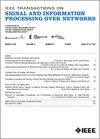广义简约注意神经网络
IF 3
3区 计算机科学
Q2 ENGINEERING, ELECTRICAL & ELECTRONIC
IEEE Transactions on Signal and Information Processing over Networks
Pub Date : 2024-10-25
DOI:10.1109/TSIPN.2024.3485473
引用次数: 0
摘要
图机器学习方法擅长利用数据中的配对关系。然而,图形无法完全捕捉许多复杂系统中固有的多向交互。一种有效的方法是在高阶组合拓扑空间(如简单复合物(SC)或细胞复合物)上建立数据模型。为此,我们引入了广义单纯注意神经网络(GSANs),这是一种新颖的神经网络架构,旨在利用屏蔽自注意层处理单纯复合物上的数据。根据拓扑信号处理原理,我们设计了一系列有原则的自我注意机制,能够处理与节点、边、三角形等不同顺序的复合物相关的数据。这些方案利用简约迪拉克算子及其迪拉克分解,以任务为导向的方式学习如何组合与连续阶相邻简约相关的数据。我们还证明了 GSAN 满足两个基本属性:包络等差性和简约感知性。最后,我们说明了我们的方法在应用于轨迹预测、缺失数据估算、图分类和单纯形预测等几项(归纳和转归)任务时,与其他单纯形和图模型的优越性。本文章由计算机程序翻译,如有差异,请以英文原文为准。
Generalized Simplicial Attention Neural Networks
Graph machine learning methods excel at leveraging pairwise relations present in the data. However, graphs are unable to fully capture the multi-way interactions inherent in many complex systems. An effective way to incorporate them is to model the data on higher-order combinatorial topological spaces, such as Simplicial Complexes (SCs) or Cell Complexes. For this reason, we introduce Generalized Simplicial Attention Neural Networks (GSANs), novel neural network architectures designed to process data living on simplicial complexes using masked self-attentional layers. Hinging on topological signal processing principles, we devise a series of principled self-attention mechanisms able to process data associated with simplices of various order, such as nodes, edges, triangles, and beyond. These schemes learn how to combine data associated with neighbor simplices of consecutive order in a task-oriented fashion, leveraging on the simplicial Dirac operator and its Dirac decomposition. We also prove that GSAN satisfies two fundamental properties: permutation equivariance and simplicial-awareness. Finally, we illustrate how our approach compares favorably with other simplicial and graph models when applied to several (inductive and transductive) tasks, such as trajectory prediction, missing data imputation, graph classification, and simplex prediction.
求助全文
通过发布文献求助,成功后即可免费获取论文全文。
去求助
来源期刊

IEEE Transactions on Signal and Information Processing over Networks
Computer Science-Computer Networks and Communications
CiteScore
5.80
自引率
12.50%
发文量
56
期刊介绍:
The IEEE Transactions on Signal and Information Processing over Networks publishes high-quality papers that extend the classical notions of processing of signals defined over vector spaces (e.g. time and space) to processing of signals and information (data) defined over networks, potentially dynamically varying. In signal processing over networks, the topology of the network may define structural relationships in the data, or may constrain processing of the data. Topics include distributed algorithms for filtering, detection, estimation, adaptation and learning, model selection, data fusion, and diffusion or evolution of information over such networks, and applications of distributed signal processing.
 求助内容:
求助内容: 应助结果提醒方式:
应助结果提醒方式:


